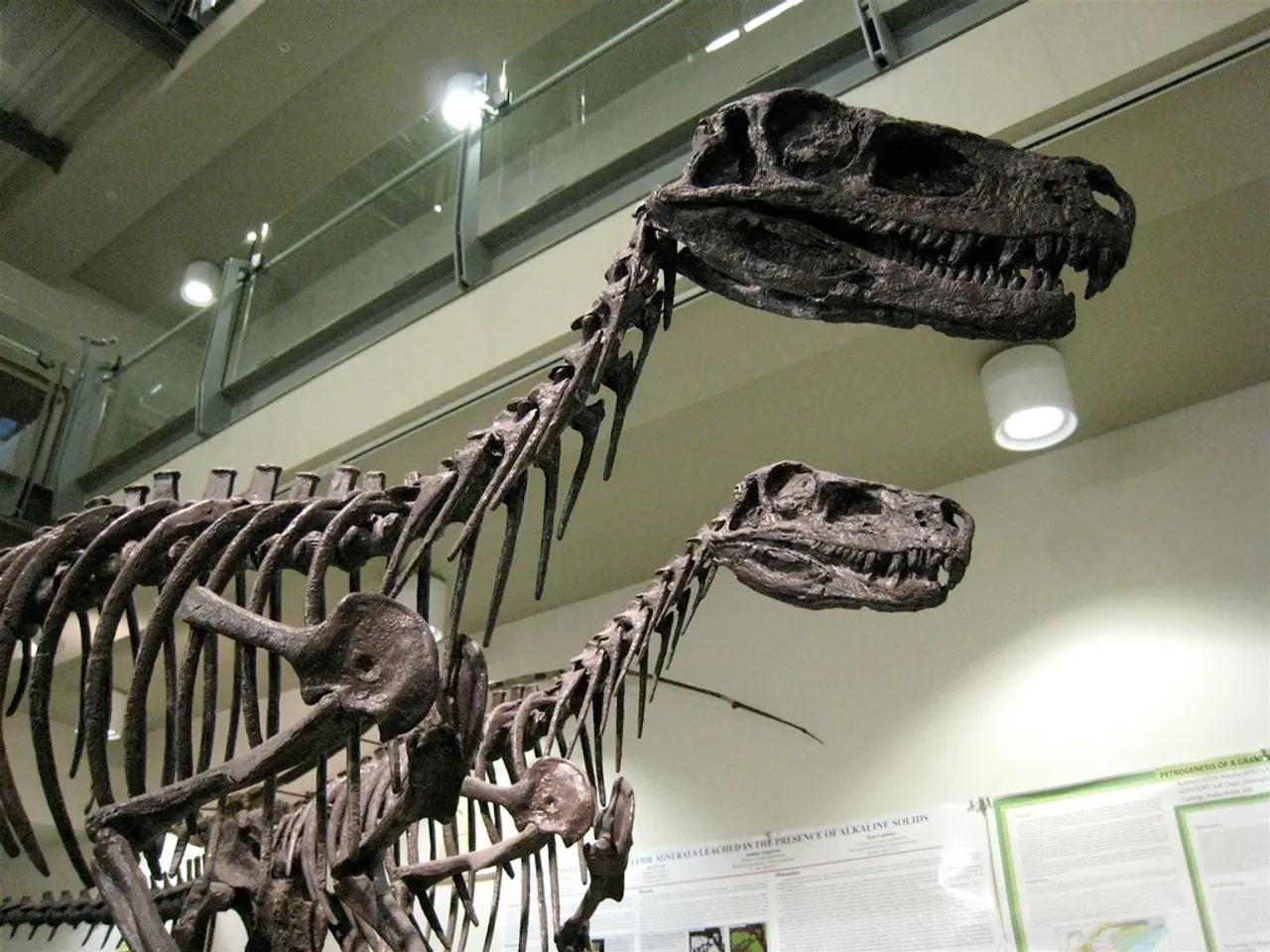Largest Ever Feathered Dinosaur Belongs to the T. Rex Family
In the vast prehistoric landscape of China, around 125 million years ago, a massive, feathered relative of the Tyrannosaurus rex roamed the earth. This new species, named Yutyrannus, has been making waves in the world of palaeontology.
Yutyrannus, measuring about 7.5 to 9 meters in length and weighing approximately 1.1 to 1.5 tons, is a large basal tyrannosauroid dinosaur [2][3][5]. Its evolutionary significance lies in the challenge it poses to traditional views of tyrannosaurids as exclusively scaly, large-bodied apex predators. Yutyrannus had a coat of feathers, suggesting evolutionary retention of feathers from smaller ancestors and indicating a more complex picture of tyrannosauroid integument and possibly thermoregulation [5][4].
Unlike more derived tyrannosaurids, Yutyrannus retained relatively long forearms with three functional digits, a more primitive trait among tyrannosauroids [2]. The discovery of Yutyrannus provides crucial insight into the evolutionary trajectory of tyrannosauroids, showing that large body size and feathered coverings were not mutually exclusive. This challenges the traditional "scaly giant predator" model, illustrating that feathers might have played roles beyond flight, such as display or thermoregulation, in large theropods [4][5].
Three Yutyrannus fossils have been uncovered in northeastern China, including an adult and two juveniles. The extensive plumage covering Yutyrannus provides direct evidence that some of the largest dinosaurs were indeed feathered creatures [1]. This discovery challenges the current understanding of the evolution of the Tyrannosauroid group, as most earlier relatives of the T. rex were thought to be much smaller in size [1].
In summary, Yutyrannus is a key species in understanding tyrannosauroid characteristics and the evolutionary history of feathers among theropods. Its size and weight, estimated to be about 1.1 to 1.5 tons, make it the largest known dinosaur species with direct evidence of feathers [5]. Its long forearms with three functional digits, a trait more commonly found in less derived tyrannosauroids, further add to its significance. The discovery of Yutyrannus challenges our understanding of the evolution of tyrannosaurids, suggesting that feathers were present before the evolution of the giant, scaly tyrannosaurids like Tyrannosaurus rex. This has implications for our understanding of tyrannosaur evolution and integument diversity.
Science and environmental-science fields have been intrigued by the discovery of Yutyrannus, a feathered, large basal tyrannosauroid dinosaur from northeastern China. This finding challenges the traditional model of space-and-astronomy, technology-driven beliefs about the evolution of tyrannosaurids, as it reveals that feathers might have played roles beyond flight, such as display or thermoregulation, in large theropods.




